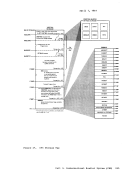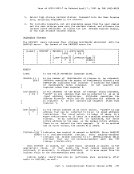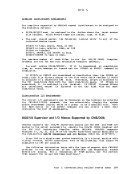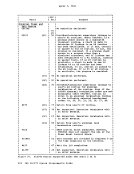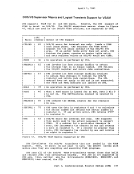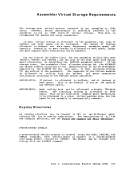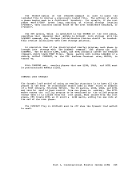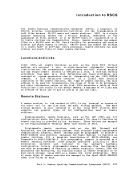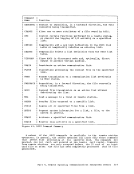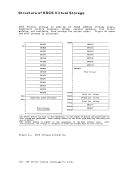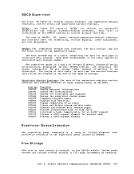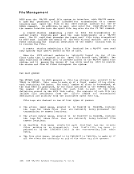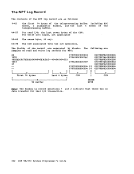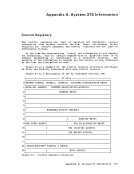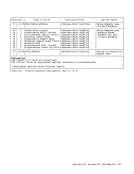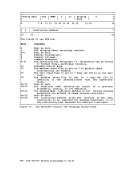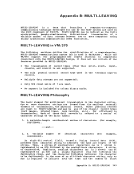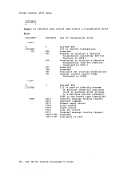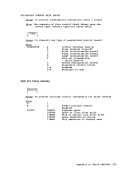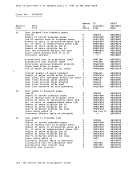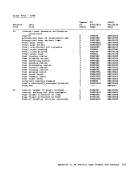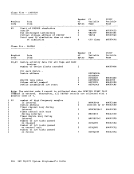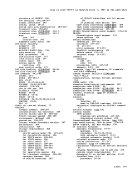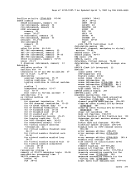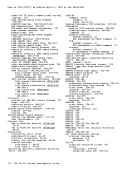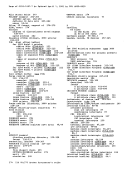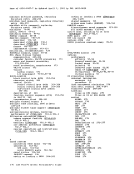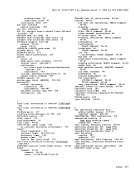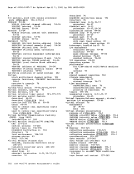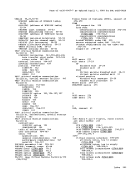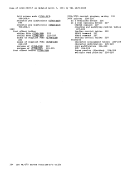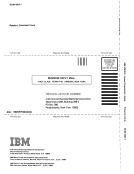page of GC20-t801-7 As Updated April 1, 1981 by TNL GN25-0829 IDENTIFYING AND LOCATING A PAGEABLE MODULE If a proqram check PSW or SVC PSi points to an address beyond the end of the CP resident nucleus, the failing module is a pageable module. The CP system load map identifies the end of the resident nucleus.
Go to the address indicated in thePSW. Backtrack to the beginning
oftggi paqe frame. The first eight bytes of that page frame (the page
frame containinq the address pointed to by thePSW) contains the name of
the first pageable module loaded into the page. If multiple modules
exist within the same page frame, identify the module using the load map
and failing address displacement within the page frame. In most cases,register 12 will point directly to the name. To locate a pageable module whose address 1S shown in the load map; use the system VMBLOK segment and page tables. For example, if the
address in the load map is55000, use the segment and page tables to
locate the module at segment 5, page 5.VMDUMP RECORDS: FORMAT AND CONTENT When a user issues the VMDUMP command, CP dumps virtual storage of the
user's virtual machine.CP stores this dump on the reader spool file of
avirtual machine that the user specified as an operand on the VMDUMP command. CP writes the storage dump to the spool file as a series of logical
records. Each spool file record and each logical dump record is
4096-bytes long. However, because each spool file record contains a
header, one logical dump record does not fit into one spool file record.
For this reason,CP splits a logical dump record into two parts. CP writes one part to one spool file record and the other part to an
adjacent spool file record. The size of each part varies depending upon
theCP is
currently usinq. Thus, each logical dump record spans two spool file
records. Fiqure10.1 shows the format of spool file records, the format
of loqical dump records, and how loqical dump records span spool file
records.
The first spool file record contains a spool page buffer linkage
block(SPLINK) followed by a TAG area followed by dump information. All
other spool file records contain only aSPLINK followed by dump information. A SPLINK, which contains data needed to locate information in the
associated spool file record, has the following format:
hexadecimalQ!l§gi o
4
8
Clengih 4 bytes
4 bytes
4 bytes
4 bytes
content
theDASD location-(DCHR) of the next page
buffer
theDASD location (DCHR) of the previous
page buffer
binary zeros
the number of data records in the bufferPart 1. Debugging with VM/310 63
Go to the address indicated in the
of
frame containinq the address pointed to by the
the first pageable module loaded into the page. If multiple modules
exist within the same page frame, identify the module using the load map
and failing address displacement within the page frame. In most cases,
address in the load map is
locate the module at segment 5, page 5.
user's virtual machine.
a
records. Each spool file record and each logical dump record is
4096-bytes long. However, because each spool file record contains a
header, one logical dump record does not fit into one spool file record.
For this reason,
adjacent spool file record. The size of each part varies depending upon
the
currently usinq. Thus, each logical dump record spans two spool file
records. Fiqure
of loqical dump records, and how loqical dump records span spool file
records.
The first spool file record contains a spool page buffer linkage
block
other spool file records contain only a
associated spool file record, has the following format:
hexadecimal
4
8
C
4 bytes
4 bytes
4 bytes
content
the
buffer
the
page buffer
binary zeros
the number of data records in the buffer

























































































































































































































































































